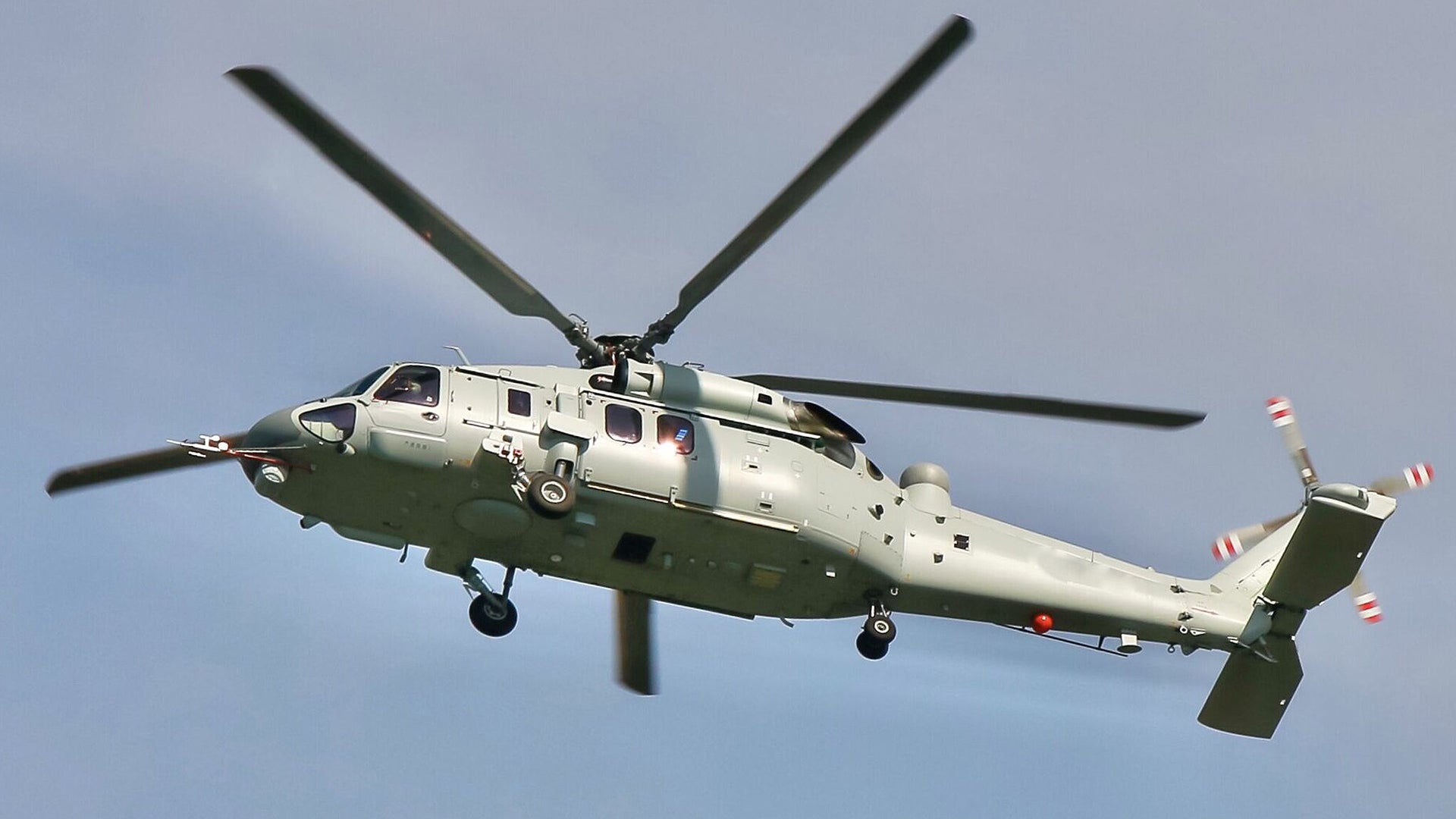China is world-renowned for its ability to steal foreign intellectual property, reverse engineer it, and to quickly produce something similar. In fact, this relationship between espionage, design, and production has helped catapult the People’s Liberation Army into a place where America’s technological superiority is no longer assured. But when it comes to creating a knock-off of America’s legendary Sikorsky H-60 Black Hawk helicopter, China already had dozens of airframes on-hand to examine and even improve upon. You can read all about the Z-20 and China’s experience with the Black Hawk in this past piece of ours. Now, with their standard Z-20 Black Hawk utility helicopter clone already in service, the rapidly expanding People’s Liberation Army Navy is getting its own shipboard model, just like how the U.S. Navy has the Seahawk.
Below is a great shot of the latest Harbin Z-20 configuration, taken at China’s big helicopter exposition just days ago. The Z-20 is now in operational service with the People’s Liberation Army.

While China was showing off its Black Hawk clone in front of an international audience, low-resolution and blurry photos of the supposed Z-20F began to appear online, including some that showed auxiliary wing-like hardpoints attached to it, similar to the Lightweight Armament Support Structure (LASS) and External Stores Support System (ESSS) wings found on its American-made counterparts.
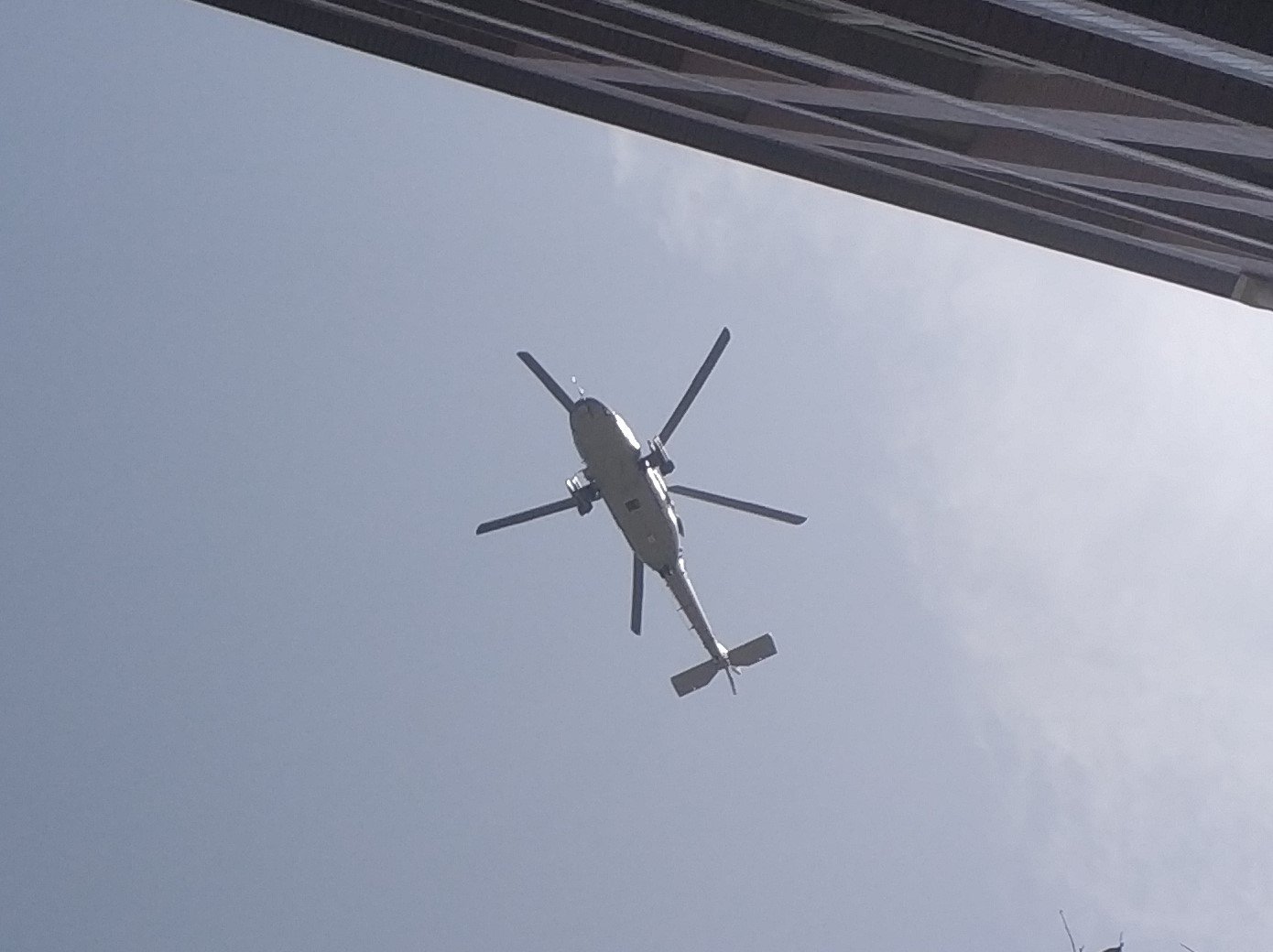
These attachments have become especially critical for U.S. Navy Seahawk helicopters as they are being used constantly in the force protection role aimed at countering small boat swarms that could threaten their motherships and other allied ships nearby. So, it’s not surprising that China in prioritizing emulating this capability.
Now, not long after these less than stellar images began to surface, we have our first high-resolution photos of the Z-20F to examine in detail.
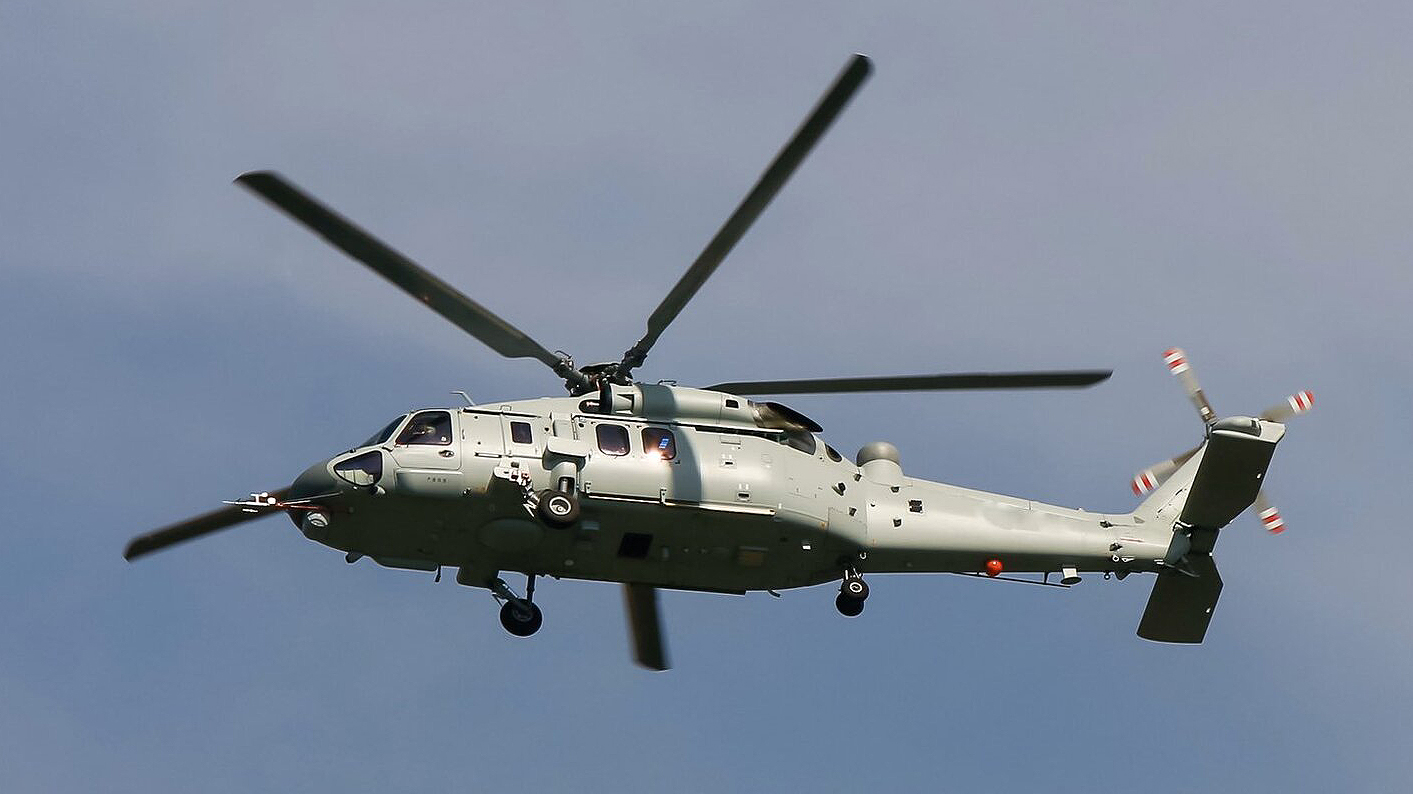
The helicopter is closer in form to the mold line of the Black Hawk than its general utility counterpart, especially in terms of its nose section. It features apertures for a missile approach warning system (MAWS) and it has a landing gear arrangement similar to SH-60B/F and MH-60R Seahawks that operate from the small decks of surface combatants. A FLIR sensor is seen underneath the helicopter’s nose, as well as what looks like some sort of larger radome for a surface search radar under its fuselage.
Author’s update: A Seahawk pilot contact of ours pointed out that the bulges below the cockpit doors may be conformal radar arrays. After closer examination, I agree. This would also make sense considering the ventral radome’s shallow dimensions and smaller size than what is found on the SH-60B/F and MH-60R, for instance.
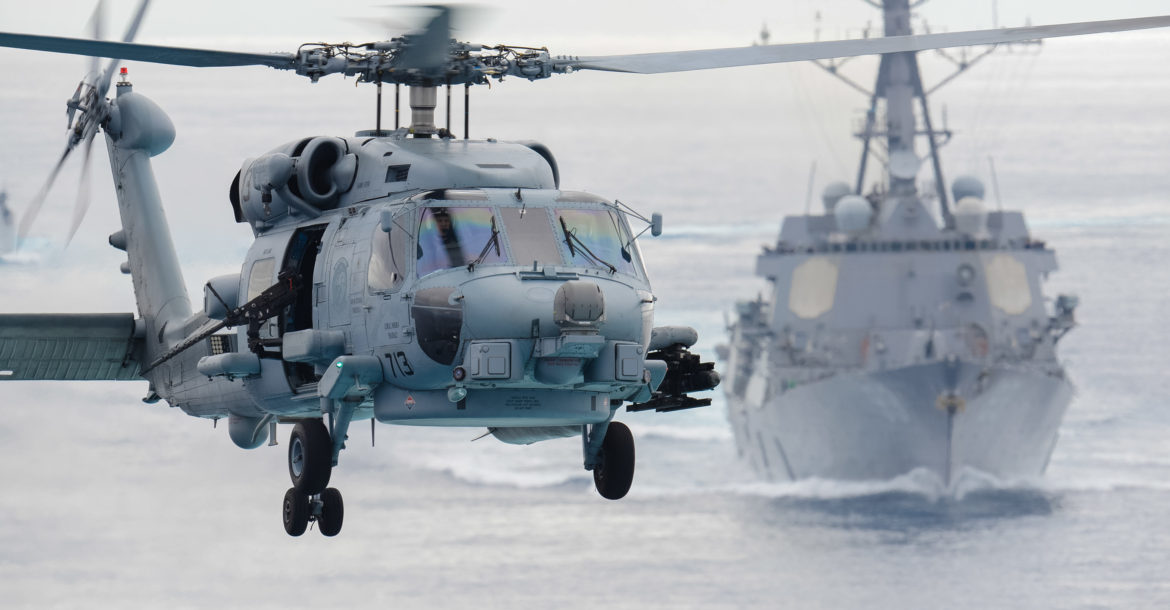
A square hole similar to those found on Seahawk and other maritime-optimized helicopters that use the RAST system for recovery is also clearly seen. Another large square structure is visible along the helicopter’s under-fuselage centerline, although it is tough to tell definitely what it is for in the available images. This is also true for a number of other protrusions on the Z-20F’s belly. A vertical sonobuoy launching aperture is possible here.
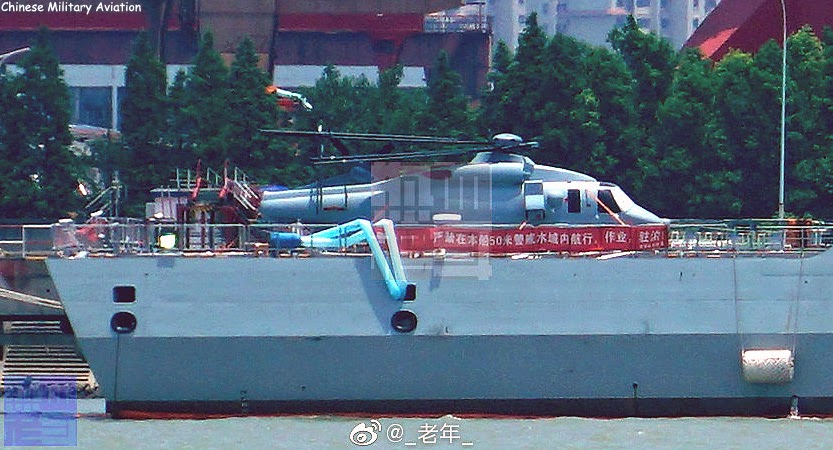
The helicopter’s tail boom holds a number of features, including a downward-facing UHF communications antenna and a directional data-link antenna under a dome. These are key components that give the Z-20F the capability to send large amounts of information to receivers that are located on the surface of the earth within line-of-sight. For beyond-line-of-sight connectivity, a “towel rack” high-frequency antenna is visible, as is a large satellite communications antenna system is located just aft of where the fuselage connects with the tail boom. An APU exhaust appears to be located just before it on the helicopter’s fuselage. There are also brackets for flare dispensers on the tail and you can clearly see how the rotor portion of the tail is meant to fold for storage within the tight confines of a ship’s hangar bay. Finally, the aircraft is also equipped with a temporary air-data probe for flight testing.
The Z-20F will likely share the same glass cockpit with its utility cousin. We got a glimpse of it for the first time via the image below:
The Z-20F isn’t some sort of frivolous technological parity prestige program for the PLAN, it is a badly needed capability. Currently, there is no helicopter that is ideally suited for China’s rapidly expanding force of large and advanced surface combatants. Currently, the PLAN has some Russian-built KA-28s, the larger Z-8/Z-18 that was designed off of the French Super Frelon, and the Z-9, which is a light twin derived from the French Dauphin.
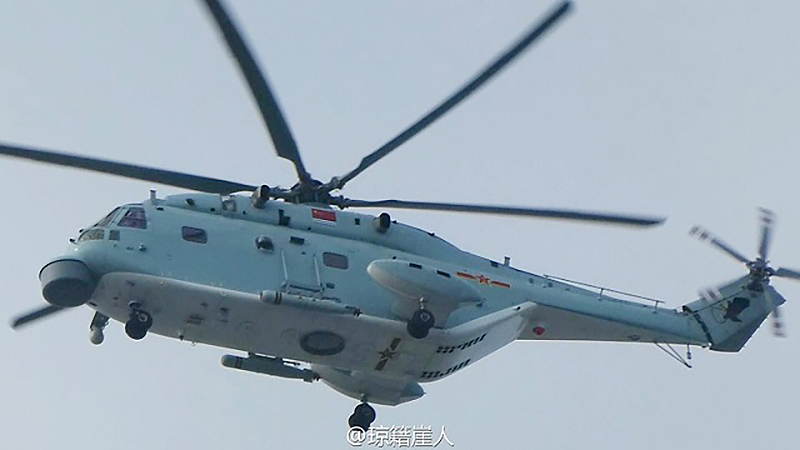
None of these helicopters offer a modern, multi-role capability that has the ability to hold significant amounts of gas while also lifting diverse weaponry, such as guided anti-armor missiles used for defending ships against swarming attacks, torpedoes, and anti-ship missiles. The Z-20F can presumably do all this while also being ideally suited for the hangar bays of China’s growing fleet of massive Type 055 destroyers. It is also very possible that this helicopter will end up on the PLAN’s Type 052C/D destroyers, and possibly even the PLAN’s Type 054 frigates, among other vessels, such as China’s aircraft carriers and amphibious assault ships.

With this in mind, the Z-20F would fill a massive gaping hole in the PLAN’s inventory and would extend the combat reach and enhance the situational awareness of its ships dramatically. So, don’t be surprised if you see China’s navalized Black Hawk clone flying from the decks of its warships very soon.
Contact the author: Tyler@thedrive.com
